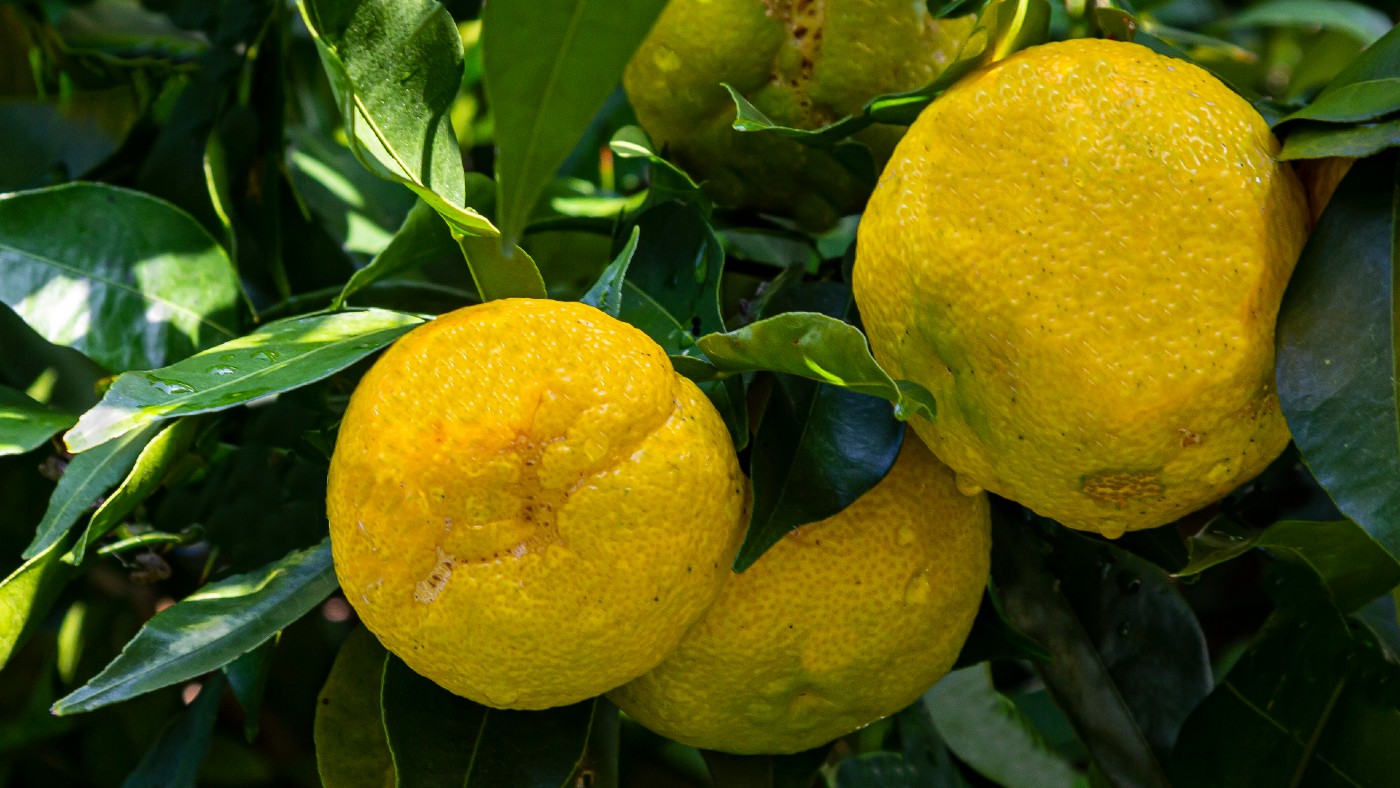Food trends: what we’ll be eating in 2022
From umami-rich ingredients to edible cutlery and tableware
1. Yuzu goes mainstream

Yuzu – a tangerine-sized citrus fruit cultivated in Asia, with a lemon-grapefruit-lime flavour – is already prized by high-end chefs, says Sudi Pigott in the Daily Mail. Now, it’s expected to break through to the mainstream, appearing on shelves in various condiments, including yuzu mustard and yuzu kosho (a preparation pairing it with fermented chillies that can be used almost like a pesto).
2. Hibiscus, date molasses and pickling

Another ingredient with “hot trend status” is hibiscus: long enjoyed in fruit tea, the flower is now “finding favour in yoghurt and spreads, as well as in soft drinks, mocktails and cocktails”. Date molasses, an Israeli syrup, will become the healthy sweetener of choice. And the home pickling craze spawned by lockdown will switch its focus to fruit – so expect to see social media clips of everything from “pineapple and watermelon to apple, plum and blueberries” being “pickled in a brine of vinegar, sugar and salt”.
3. Umami days
Reading the food runes is never easy, says Kate Ng in The Independent – but in predicting the major trends of 2022, experts have found much to agree upon. Umami – the “moreish, savoury” flavour found in soy sauce, parmesan and stocks – is expected to be the “prevailing profile in our food” this year. This means that various umami-rich ingredients (mushrooms, sea greens, anything flavoured with truffle) are set for substantial increases in sales, as is monosodium glutamate (MSG).
The Week
Escape your echo chamber. Get the facts behind the news, plus analysis from multiple perspectives.

Sign up for The Week's Free Newsletters
From our morning news briefing to a weekly Good News Newsletter, get the best of The Week delivered directly to your inbox.
From our morning news briefing to a weekly Good News Newsletter, get the best of The Week delivered directly to your inbox.
The amino acid widely used in East and Southeast Asia, it has acquired a bad name thanks to “unsubstantiated claims” that it can lead to headaches and metabolic disorders. But with much to recommend it as an instant umami flavour-enhancer, MSG looks likely to be rehabilitated as a “staple pantry ingredient
4. Potato milk
The craze for plant-based foods will continue, says Speciality Food Magazine. Potato milk is being hailed as the sector’s “next big thing”: proponents say it is deliciously creamy, and more sustainable than other plant-based milks.
5. ‘Climatarianism’ and ‘reductarianism’
“Climatarianism” (a desire to reduce your carbon footprint) will be a new addition to the green-eating lexicon, says Bridie Pearson-Jones on MailOnline. And it will be joined by “reductarianism” – cutting down on meat and dairy without going fully vegan.
Meanwhile, the revolt against single-use plastic is set to spawn one of the year’s oddest trends, says Kim Severson in The New York Times. Expect to see more and more edible cutlery and tableware, made from ingredients such as wheat bran and pasta. You eat with them, and then you eat them.
A free daily email with the biggest news stories of the day – and the best features from TheWeek.com
6. Experimental home baking

People say the pandemic has created a “homebody economy” in which people go out less, says Sophie Morris on iNews. One sign of this is that the lockdown trend for home baking is likely to carry on – while becoming more experimental: the new craze will be “outlandish mega bakes” that include “gravity-defying” and “3D” cakes. The trend seems to be “especially popular among millennials, Gen X and boomers”.
-
 Art that made the news in 2025
Art that made the news in 2025The Explainer From a short-lived Banksy mural to an Egyptian statue dating back three millennia
-
 Nine best TV shows of the year
Nine best TV shows of the yearThe Week Recommends From Adolescence to Amandaland
-
 Winter holidays in the snow and sun
Winter holidays in the snow and sunThe Week Recommends Escape the dark, cold days with the perfect getaway
-
 The best homes of the year
The best homes of the yearFeature Featuring a former helicopter engine repair workshop in Washington, D.C. and high-rise living in San Francisco
-
 Critics’ choice: The year’s top 10 movies
Critics’ choice: The year’s top 10 moviesFeature ‘One Battle After Another’ and ‘It Was Just an Accident’ stand out
-
 A luxury walking tour in Western Australia
A luxury walking tour in Western AustraliaThe Week Recommends Walk through an ‘ancient forest’ and listen to the ‘gentle hushing’ of the upper canopy
-
 Joanna Trollope: novelist who had a No. 1 bestseller with The Rector’s Wife
Joanna Trollope: novelist who had a No. 1 bestseller with The Rector’s WifeIn the Spotlight Trollope found fame with intelligent novels about the dramas and dilemmas of modern women
-
 Appetites now: 2025 in food trends
Appetites now: 2025 in food trendsFeature From dining alone to matcha mania to milk’s comeback

